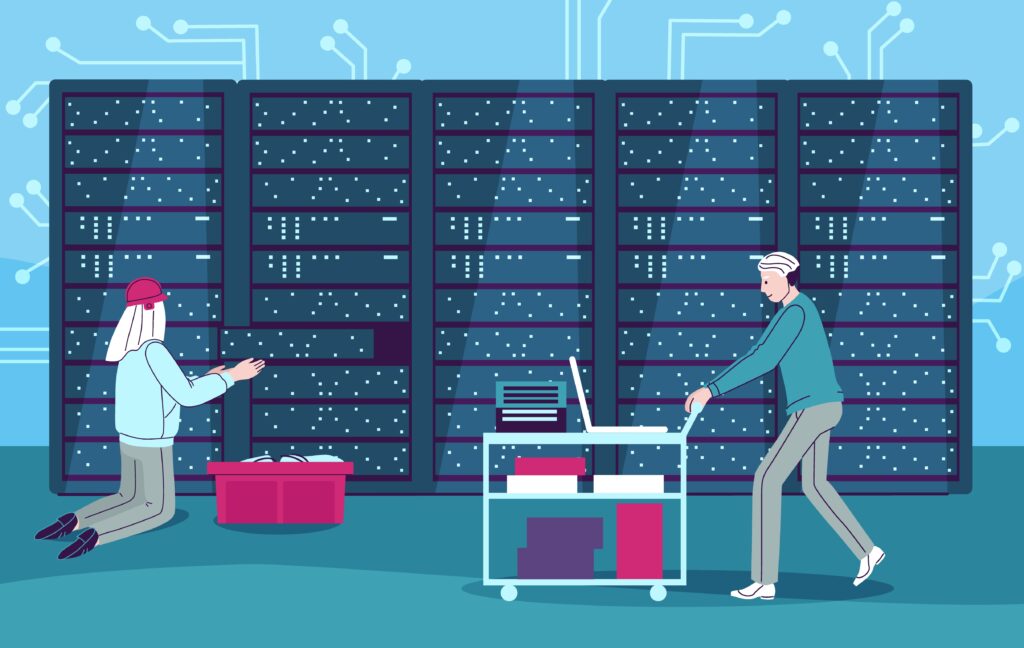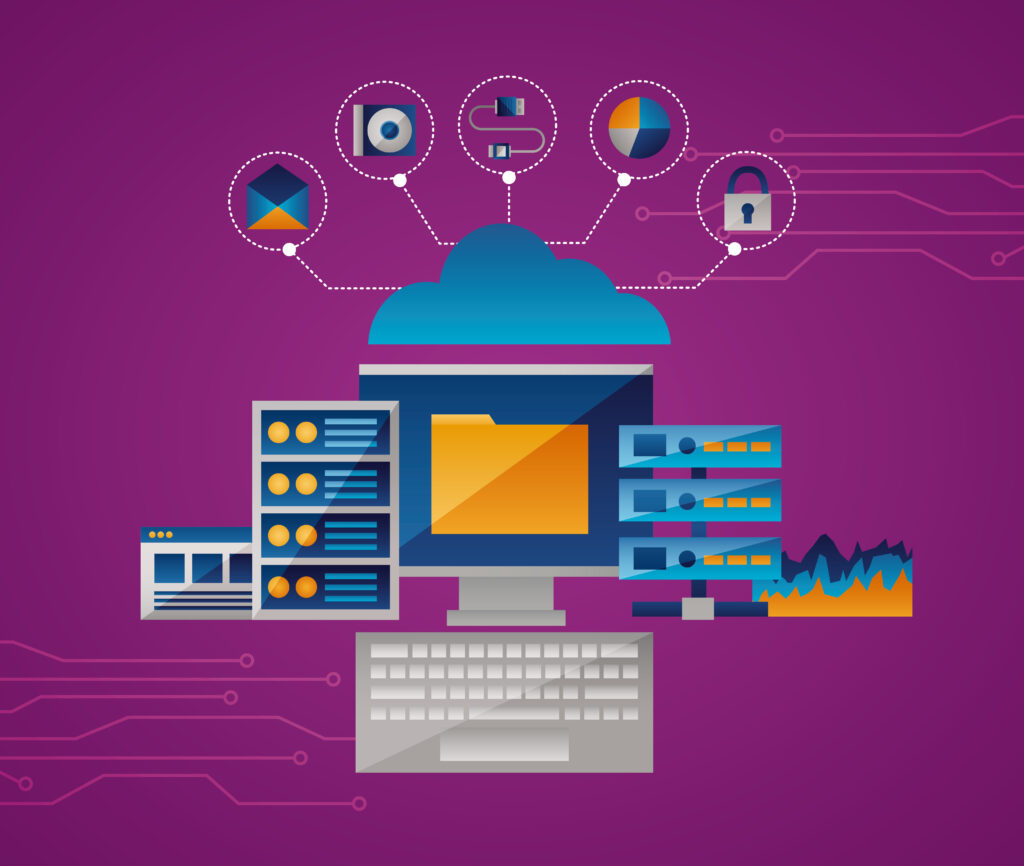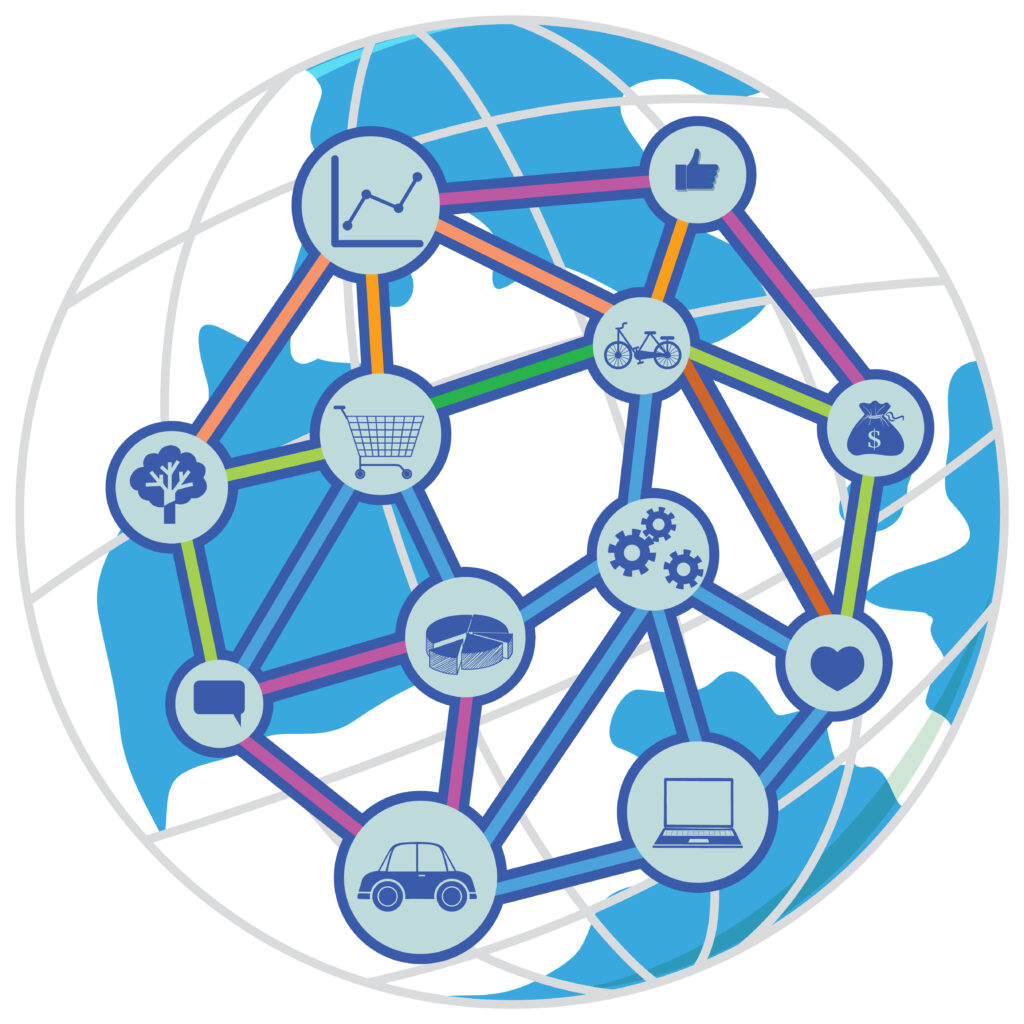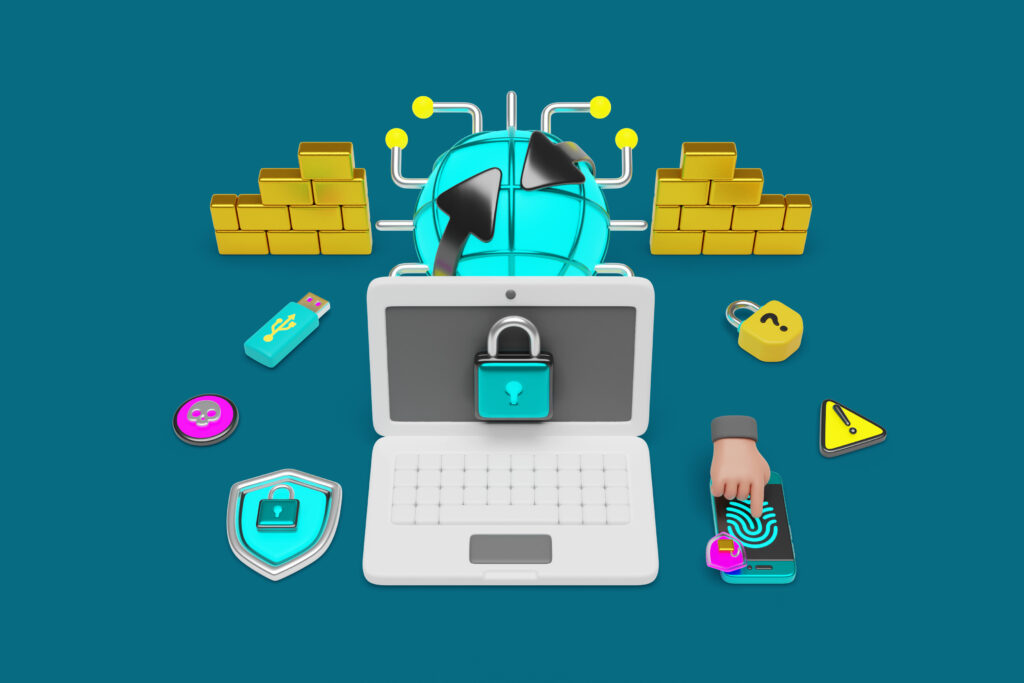Introduction: The Unseen Engine behind Every click
Do not consider the idea of falling asleep, checking your phone, social media, paying bills online, and ordering a meal by use of a food application. You have already interacted with dozens of systems not any system but information systems.
They are the digital ecosystems which silently drive almost anything that we do. Everything that you buy on the internet, everything that you have kept in the hospital, everything that you had in the government, and even your weather app on your phone all work because a well-developed information system was designed to work.
In the current industry that is moving at very high speed, data is everywhere and information systems constitute the highways through which raw data can be converted to meaningful information. Businesses would be in the dark, the hospitals would be discovered in the red tape and would not be what the internet is today.
The blog will be giving you a tour around the information systems world; what they actually are, how they work, what they actually consist of and why they form the mainstay of the modern-day organizations. The way these systems will be affected by artificial intelligence, cloud computing and cybersecurity in the future will also be discussed.

Eventually you will see information systems not as computers but as people, or you will see information systems not as thought processes but as the power to sounder decisions.
Information Systems What Are They?
Information System (IS) is simply a combination of technology and people and a process of collecting, processing, storing, and disseminating information to support the decision making and control process in an organization.
It is simply stated that it is a system that is to process data and transform it into valuable information. Think of it as a kitchen, information is your raw material, the system is your cook, the information that emerges out of the system is processed information that is now ready to be served.
In any organization, big or small, information systems play an important role in order to work effectively. These systems make businesses run efficiently because they follow the inventory and employee management besides analysing customer trends.
Let’s break it down:
- Input: The system receives information (e.g. customer orders or employee information).
- Processing: Data is processed (checking of the available stock, calculation of salary).
- Output: The system produces meaningful data (i.e. reports or invoices).
- Feedback: To improve the accuracy or the performance in the coming cycle, the output is analyzed.
Informatics are not computer-based or software-based; but rather, are about the manner in which technology and individuals interact to convert data into information. Whether it is a student taking an online course or a CEO of a company looking at a sales dashboard, you are using one.
Important Information Systems Building Blocks
All information systems whether large or small are founded on five key components. These elements collaborate in gathering, processing, and supplying significant information. Knowledge about these sections can make us visualize the actual working of an information system as we do about the organs of a living organism.
Hardware
Hardware refers to the physical component of information system, or what we can see and touch. It encompasses the computers, servers, keyboards, scanners, printers, and even smartphones.
As an example, a cashier scanner of the supermarket is a scanner, monitor, and cash register, all of which are hardware components.
There would be no hardware to process and store data.
Software
In case hardware is the body, software is the brain. All the programs and applications are included in software and they tell the hardware what to do.
There are two types:
- System software (Windows, macOS, or Linux) is a program to execute the computer.
- Application software (such as the Excel, Word, or custom business applications) is used to complete a particular task.
- Hardware would be nothing but a dead box of wires and metals without software.
Data
Any information system is based on data. It contains the facts, figures and records which constitute the basis of useful information.
As an example, the database of a school may contain information regarding the grades, attendance of students and their personal information. When manipulated, such data turns into information – performance reports or attendance summaries.
Nowadays, data has been referred to as the new oil in digital age and information systems are the refineries that transform it into value.
People
There is no system that functions without human beings. The information system involves users, managers, IT experts, and decision makers.
The data is entered by people, and the interpretation of reports and strategic decisions is carried out by them.
Regardless of the most advanced technology, the results need to be analyzed, issues resolved and the system should achieve its objectives and this needs human understanding.
Processes
Processes are guidelines and procedures that determine data flow in the system. They specify the process of gathering and verifying information, storing and utilizing.
An online store may have the process of:
- Customer places an order
- System verifies payment
- Order details are received at warehouse.
- Shipment system modifies shipment status.
- These processes maintain the organization of the system and make them accurate.

These five elements create a mighty cycle together since the hardware executes the software, the software processes the data, people use the outputs and processes maintain everything in sync. The combination of this balance allows the system not only to be functional, but also smart and reliable.
Information Systems types
There are numerous types of information systems that are meeting a particular purpose. Similarly, various systems are used by different organizations to manage daily business activities, decision-making as well as future planning just like various tools are used to address various needs.
The following are the key categories of information systems that each business depends on:
Transaction Processing System (TPS)
- A TPS deals with day to day transactions of an organization.
- This can be sales order processing, payroll systems or airline reservations.
- They make sure that any minor process such as recording of a sale or changing stock is done fast and correctly.
- Even basic business processes would be stalled without TPS.
Management Information System (MIS)
- MIS is concerned with transforming raw data into comprehensible summaries and reports to Managers.
- As an example, an MIS may demonstrate the sales of a company in total during the month, products that are selling better, or the areas that are doing well.
- This information helps managers to make better decisions and control.
Decision Support System (DSS)
- DSS assists in complicated decision making, through analysis and presentation of vast quantities of data and the presentation of potential solutions.
- As an example, a bank can refer to the DSS to approve a loan or not by examining the income of the applicant, credit rating, and the level of risk taken by the latter.
- DSS is a combination of data, models, and analytical tools to promote human judgment.
Executive Information System (EIS)
- EIS is also known as Executive Support System (ESS) which gives the top level executives access to important data easily.
- It presents key performance indicator, summaries and trends through dashboards and charts.
- It is the one that is used by executives to monitor the performance of the company, changes in the market and the general wellbeing of the organization.
Knowledge Management System (KMS)
- KMS archives and distributes the knowledge of organizations including best practices, documentation of projects and research facts.
- It assists the employees to learn through one another and eliminate the repetition of errors.
- KMS in such companies as Google and IBM is used to deal with internal knowledge and innovation.
Automation System in the office
- OAS enhances the productivity of day to day office functions by using such tools as email, word processors, spreadsheets, and digital calendars.
- The system slashes paperwork, enhances communication and accelerates the documentation.
Expert Systems
- Expert systems are systems that imitate the decision making capability of human experts.
- Artificial intelligence and bodies of knowledge are used to give advice or find solutions to problems – such as finding better investments or diagnosing diseases.
Significance of Information Systems in the Contemporary Business
In the current world, information is the driver of business. A single organization can not survive, and without it, it can not grow. The information system has been made blood of the modern businesses as it assists them to run well, make better decisions and remain competitive.
This is the reason why information systems matter so much to the business environment:
Enhancing Productivity and Efficiency
- Information systems automate routine activities, which will save time and energy.
- As an instance, automated systems that take a couple of seconds to process invoices or payrolls are used instead of manually handling them.
- This not only minimises errors but also enables the employees to concentrate on better and more strategic work.
Improving Cooperation and Communication
- In a globalized world, effective communication is essential.
- Information systems have facilitated instant communication through email system, video conferencing, chat applications and common platforms.
- They can also enable teams across nations to collaborate as though they were in the same office; transmit data, files, and updates in real-time.
Incrementing Strategic Planning
- Information systems offer data-driven insights to the business leaders that can inform the long-term strategies.
- As an illustration, using sales data, companies are able to anticipate potential future trends, spot new opportunities, and prevent any potential risks.
- It is this capacity to plan ahead that gives the contemporary businesses competitive advantage.
Improving Customer Experience
- The modern day customers want fast services, personalized recommendations and 24/7 support.
- IT is driving these experiences – online chatbots and CRM software as well as order tracking and feedback management.
- Through gathering and processing customer information, organizations are in a position to know the needs more effectively and create more enjoyable experiences.
Improving Decision-Making
- All decisions including recruitment of employees to new product release require proper information.
- The information systems systematize and analyze the information, and they give clear reports that assist managers to make evidence-based decisions that are intelligent.
- They substitute speculation with reality – which is the key to winning in a competitive market.
Reducing Costs
- Data management and automation save much money in terms of operation.
- Companies reduce costs and enhance productivity by reducing the amount of human error and enhancing resource allocation efficiency.
- As an example, the inventory management systems are used to prevent overstocking or stocking-in short of the products, and maintain low costs of storing the products.
Enhancing competitive Advantage
- Those companies that utilize fully the information systems will be in a better position to respond to the changes, identify the market trends quicker and innovate than their competitors.
- They provide them with the advantage of winning the digital race be it the data analytics, customer relationship management or supply chain monitoring.

Concisely, information systems have become a strategic resource – not necessarily a technical resource. Companies that adopt them are more responsive, effective and future-proofed.
Information Systems and the Role they play in making decisions
Any organization, be it a small local store, or a global corporation makes hundreds of decisions every day. Such decisions may be strategic, tactical and operational and all of them are based on the access of the correct and updated information.
Information systems are the eyes of decision-making, processing ambiguous information into comprehensible information that can be acted upon.
This is how they aid in the improvement of better decision-making at all levels:
Operational Decisions
Operational level managers are making short term decisions regarding operations.
For example:
- What products are to be replenished?
- What are the employees on shifts?
To facilitate these functions a Transaction Processing System (TPS) or Management Information System (MIS) will give them real-time data and reports in the easiest way possible.
Tactical Decisions
These are medium term decisions that contribute to the realization of organisational objectives such as making budgets or enhancing production efficiency.
Information systems assist in the examination of performance patterns, tracking of costs, and providing recommendations.
An example is a manufacturing firm that may use Decision Support System (DSS) to make better resource allocation and minimize waste.
Strategic Decisions
On top, there are executives who will make long term decisions which will influence the future of the organization – these include venturing into new markets or starting new products.
Executive Information Systems (EIS) provide summaries of information within the whole company, and the information is presented as charts and dashboards that indicate opportunities and threats.
Such tools enable the leaders to make solid decisions based on the available data and are not reliant on intuition.
Real-Time Decision Support
The information systems in the modern world offer real-time analytics which allow the organization to make immediate responses to the changes.
To illustrate, an electroniccommerce firm could track the customer activity in real-time and change marketing campaigns in hours.
This loop of feedback enhances performance and prevents the use of expensive errors.
Artificial Intelligence in Predictive Decision-Making.
By using artificial intelligence within the information systems, companies can make proactive decisions and anticipate the result.
AI-based systems can be utilized by banks to predict risks in loans and retailers predict what customers will buy to stock it accordingly.
Predictive analytics transforms data of the past into possibilities of the future and informs wiser decisions.
Essentially, information systems enable the decision-makers to be clear, confident, and control.
They turn data into wisdom- they assist companies in the transition of what happened to what should we do next?
Elements of a Powerful Information System Strategy.
The development of a productive Information System (IS) plan is not a simple task of purchasing new computers, or installing some fancy software. It is concerned with the integration of technology in the general objectives, vision and operations of an organization.
A powerful IS strategy assists companies to employ information as a competitive weapon rather than a support tool. The key elements that can make information system strategy effective are:
Clear Business Objectives
- The initial one is the definition of what the organization desires to accomplish.
- These goals should be the direct support of the IS strategy.
- As an example, an information system of a company aimed at enhancing customer satisfaction should be oriented to customer information, feedback, and fast delivery of services.
IT and Business Alignment
- Technology and business teams are most productive in the information systems.
- The IT department is supposed to know the objectives of the company, and the business leaders ought to know what technology can accomplish to them.
- This fit is to make sure resources are deployed prudently and all system investments lead to actual business outcomes.
Data Governance and Data Management
- Each organization should possess a powerful structure of data control, its gathering, storage, security, and sharing.
- The data governance policies avoid abuse, keep them accurate, and follow the requirements of the rules, such as GDPR or HIPAA.
- The lack of proper data management can destroy even the best of systems.
Infrastructure and security
- A modern IS plan will have secure and scalable infrastructure; i.e. networks, cloud storage, servers and backup systems.
- A significant role in this is in cybersecurity.
- To ensure trust and continuity, it is necessary to protect sensitive data against breaches, ransomware, and cyberattacks.
Proficient Human Resource and Ongoing Training
- People make success and not technology.
- A proper IS strategy involves continuous training to ensure that the workers are able to become familiar with the new tools, learn the analysis of data, and make use of systems in a productive manner.
- Technology usually provides better outcomes to the organization where it is invested in people.
Performance Measurement
- Finally, any IS strategy must have performance indicators to gauge success.
- System uptime, user satisfaction, and cost savings are metrics that indicate the working or adjusting strategy.
- The indication of these indicators will guarantee growth and stability.
Concisely, a good information system strategy is one that brings people, processes and technology under one definitive vision, which is to deliver value, achieve security and business excellence.
TheEffects of Information Systems in the various industries
The modern world has seen the revolutionization of information systems in nearly all industries.
They transformed the way institutions in the healthcare and education, as well as banking and transportation, work, communicate, and provide value to the customers.

Within the industry, we will examine the benefits of information systems in the various sectors:
Healthcare Industry
- Information systems have been used to save lives in healthcare since it has enhanced accuracy of data and communication.
- EHR systems are used to store the histories of the patients, prescriptions, and test results, to enable the doctors make faster and more accurate diagnosis.
- The management systems of hospitals keep records of appointments, billing and inventory.
- The telemedicine platforms enable patients to remotely consult the physicians, which breaks the distance barriers.
Education Sector
- Information systems in schools, colleges, and universities handle the data, grades, attendance and learning materials of students.
- Online education is facilitated and more interactive with the help of a Learning Management System (LMS) such as Moodle or Google Classroom.
- With analytics, educators are able to monitor the progress of their students and to offer them customized learning.
Banking and Finance
- Modern banking is based on information systems.
- Everything depends on technology beginning with ATMs and online transfers to fraud detection systems.
- The decision support systems assist banks to analyze the credit worthiness of their customers and to operate investment portfolios.
- Mobile wallets and blockchain are other financial innovations changing the financial landscape.
Manufacturing
- Information systems have been applied in manufacturing as a tool to automate production, control supply chain and to uphold quality control.
- The Enterprise Resource Planning (ERP) systems are designed to incorporate all departments such as purchasing and delivery to provide a seamless flow of operations with least waste.
- The sensors and data analytics are now applied in smart factories to track the machinery and estimate the maintenance requirements before the machinery breaks down.
Retail Industry
- Information systems play an important role in the retailing industry by facilitating inventory control, sales and marketing.
- Indicatively, online commerce giants such as Amazon have advanced systems that suggest products, control inventory, and examine customer activity.
- This assists them in providing a superior shopping experience and more profits.
Government and Public Services
- Information systems are used in tax collection, citizen databases, tax collection and digital governance by governments.
- The provision of e-governance sites facilitates the capability of people accessing services online, whether it is the renewal of an ID card or filing a complaint.
- Such systems enhance transparency, minimize corruption and enhance efficiency.
Transportation and Logistics
- Flight timetables, freight-delivery routes, and on-the-fly tracking are handled by information systems.
- They are used by airlines to do ticketing as well as maintenance planning when use by logistics companies to track their shipments across the globe.
- These systems enhance customer trust, safety and reliability.
Entertainment and Media
- Social media streaming services such as Netflix and Spotify are fully dependent on information systems to suggest content and user information.
- They also interpret millions of viewing behaviors in order to customize experiences.
- Data-driven systems are also used in marketing and production in the gaming and film industries.

Information systems in all industries have transformed the manual workload to intelligent automation, the subject of guesses to evidence-based information. They are no longer luxurious, but a need to survive and develop.
Contemporary Dynamics that inform the Future of Information Systems
Due to the development of technology, the information systems also change. What used to be a simple data storage tool has now been evolved into a smart, adaptable, and networked systems that define the future of work, learning and general living.
It is time to discuss some of the most significant trends that are redefining the scenario of information systems today:
Artificial Intelligence (AI) and Machine Learning (ML)
- AI and ML are changing the nature of the operation of information systems.
- They allow systems to learn about data, make predictions and even make decisions automatically.
- To illustrate, AI-powered systems have the ability to study customer behavior, identify fraud in the banking industry, and provide online suggestions of what customers should buy.
- Machine learning algorithms are also able to get smarter and faster as they are continually improved in the course of time.
Cloud Computing
- The cloud computing has transformed the storage and access of data.
- Organizations are no longer depending on local servers to store, process and share information but rather they are using cloud platforms with high level of security anywhere in the world.
- This scalability saves money, enhances teamwork and enables businesses to expand rapidly.
- The remote working and communication across the globe have become vital because of cloud-based solutions such as Google Workspace and Microsoft 365.
Big Data Analytics
- Billions of data points are being produced in the world every second.
- The big data analytics can aid companies to make sense of this colossal amount of information.
- Trend and pattern analysis can enable the business to succeed in making predictions about customer preferences, risk identification, and development of superior products.
- As an example, big data is used by healthcare organizations in predicting disease outbreaks and retail stores in optimizing supply chains.
Internet of Things (IoT)
- IoT links physical gadgets such as sensors, vehicles and appliances to the internet.
- These tools gather information, which enters information systems forming a stream of insights.
- An example is smart homes, where IoT can be used to control a light and security system; or smart cities where it can control traffic and power use.
- IoT is rendering systems to be interactive, intelligent and sensitive to human needs.
Information security and privacy
- Digital risk accompanies digital growth.
- Cybersecurity has now been integrated into the information system strategy.
- To secure sensitive information against risks, organizations are currently spending considerable amounts to ensure that their data is encrypted, firewalled and subjected to ethical hacking.
- It is through the laws of data privacy, such as GDPR, that the data is gathered and processed in a manner that preserves the trust of the users.
Automation and Robotics
- Automation structures information systems to deal with repetitive tasks whereas robotics transfaces automation to the physical world.
- Robots are used together with humans in such manufacturing, logistics, and healthcare sectors to carry out high-precision tasks.
- With automation, the efficiency is increased, and the cost and the human error are minimized.
Blockchain Technology
- The technology of cryptocurrencies, blockchain, is also changing the information systems.
- It enables the maintenance of secure, transparent and tamperproof records – it is suitable in supply chains, finance and healthcare.
- Since all transactions are checked and recorded on more than one computer, blockchain guarantees trust without the involvement of a central authority.
Integration of 5G Networks
- The introduction of 5G networks has enhanced a high-speed and dependable data transmission.
- This enables information systems to manage large data in real time, which can be used to support such technologies as autonomous vehicles, distance surgeries and virtual reality applications.
- Such ultra-fast and low-latency connections will be of great importance to the future of information systems.
Sustainability and Green IT
- The contemporary organizations are paying attention to green information systems.
- Renewable energy is now used in data centers, and software is also optimized to use less power.
- Green IT is emerging as an ethical and business strategy of businesses seeking to strike equilibrium between technology and the environment.
These trends combined are creating a future in which information systems are not merely the instrument, but in fact, intelligent ecosystems that can adapt, learn and evolve.
They will also keep on making human beings still more connected with machines.
Summary and Interesting Conclusion
Since the very first business databases, information systems have been the foundation of the modern civilization. They permeate all our lives, including our shopping and learning habits and even our healing, traveling, and communication.
We shall now briefly summarize what we have heard:
- Information systems bring together technology, human beings, and processes in order to transform data into meaningful information.
- They are constructed around five fundamental building blocks which include hardware, software, data, people and processes.
- Such systems as TPS, MIS, DSS, and EIS provide different levels of business needs.
- They are crucial in decision making to enhance efficiency, communication and strategy.
- The close relationship between technology and business objectives is achieved through a powerful information system strategy.
- In all industries, be it healthcare sector or education sector and banking sector, IS has revolutionized the way things are done and enhanced life quality.
- The upcoming trends which are AI, cloud computing, big data, IoT and blockchain are moving information systems to the next level of intelligence and innovation.
Essentially, information system is not merely a matter of technology. These are concerning empowerment of people, making things easier and motivating development.
With the digital era still taking shape, these systems are only getting stronger and stronger as human imagination is augmented with technological accuracy to produce smarter, faster and more interconnected societies.
Final Thought
The world we live in is being influenced by information systems most of the time without our knowledge.
So here’s a question to end on:
What are your views on information systems transforming your life, your work, or your learning within the next five years?
Take a pause to think – as the solution may only be to find out how committed we are all to the virtual world that drives behind each and every click.
Learn MoreMore Blogs
